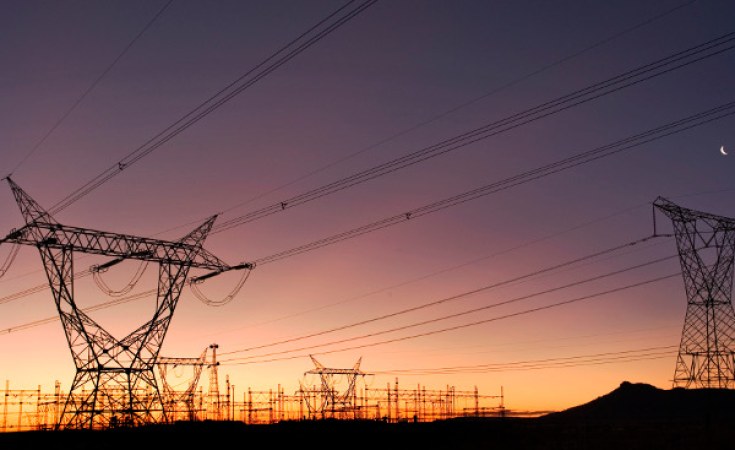NAMIBIA'S dream to be part of a power project which would have been the stepping stone for the biggest hydro-electric plant in Africa has been shattered after the Democratic Republic of the Congo (DRC) finally pulled the plug on Inga 3.
The multi-billion dollar Inga 3, which would have been developed in the Congo River by the Western Power Corridor (Westcor) consortium consisting of Namibia, Angola, Botswana, South Africa and the DRC, was supposed to start generating electricity by 2012. By 2015 it would have reached full capacity, generating 5 000 megawatts. Of this, 1 000 megawatts would have been shared by Namibia, Angola and Botswana.
The plan backfired on Thursday when Yengo Massampu, Chief Executive of the DRC's National Electricity Society (SNEL), announced that Westcor would be dissolved.
The DRC government apparently opted for a proposal by BHP Billiton, the world's biggest mining company, to build a 2 500-megawatt hydropower plant in the country to support its proposed aluminum smelter, Reuters reported.
"It was a big decision," Bloomberg quoted Massampu, who added that it would be good for the DRC to retain more of the project's electricity for its own use. Under the Westcor agreement, the DRC would have got 2 000 megawatts, the same as South Africa's Eskom.
"Each country needs to look at how it can develop itself," Massampu told Bloomberg.
The DRC's decision doesn't seem to have short-circuited Namibia.
NamPower's Marketing and Communications Manager, John Kaimu, told The Namibian yesterday that Inga 3 was only one prospect and that the power utility had various other options locally.
"I wouldn't say we are worried. But I wouldn't say we are not worried either," Kaimu said.
NamPower has not been caught off-guard by the DRC announcement.
Westcor Chief Executive Pat Naidoo told the South African Institute for Electrical Engineers in July last year already that the consortium intended to withdraw from Inga 3.
A month later he told The Namibian that it wasn't Westcor that was pulling out, but that the DRC government wanted to develop Inga 3 for themselves, backed by Billiton.
He said that the matter had been referred to a Southern African Development Community (SADC) Heads of State meeting in the DRC capital Kinshasa last August.
When NamPower Managing Director Paulinus Shilamba gave the local media his yearly update on power projects in December, no reference was made to Inga 3 or Westcor. Instead, the NamPower chief focused on the Caprivi Link, the Orange River mini-hydro project, the Baynes hydropower project, the development of the Kudu gas field, and a coal power station at Walvis Bay.
Kaimu yesterday didn't want to comment on the future of Westcor.
Naidoo, however, told Bloom-berg that Namibia, Angola, South Africa and Botswana are still committed to find a power solution together.
"The other four are intact and united, strong as can be," he said.
Reuters quoted Naidoo as saying that the project could probably be relocated to another site on the Congo River closer to Kinshasa, "if the family get together again".
According to Naidoo, discussions on the project will resume next month.
"Hopefully sanity will prevail," he told Reuters.
Kaimu last year told The Namibian that should the DRC pull out of the deal, the remaining four shareholders have mandated Eskom to assess alternative schemes in Mozambique, Zimbabwe and Angola that could be used for the same project.
Naidoo told South African Institute for Electrical Engineers that Westcor would also look to develop the 6 000-megawatt Cuanza River hydropower project, in Angola, and the 1 600-megawatt lower Kunene River hydropower project in Namibia.
If other renewable projects were not identified before the end of this month, Westcor would disband, Naidoo said.
"Our mandate is March 31 next year. If we are not moving by then, then we will close operations. We can't incur costs because we are dealing with public money."
Westcor was formed in 2003 to develop Inga 3. The shareholders, each with 20 per cent interest, were Empresa Nacional de Electricidade de Angola, Botswana Power Corporation (BPC), the Société nationale d'électricité (SNEL) of the DRC, Eskom and NamPower.
About a decade after the completion of Inga 3, Inga Grand would have been developed as the biggest hydropower plant on the continent.
Each of the countries put up US$100 000 (about N$800 000) to open Westcor's headquarters in Gaborone. The office has in the meantime scaled down operations.
According to NamPower's website, the investment cost of Inga 3 would have been five billion euro, nearly N$50 billion.
The pre-feasibility study cost Westcor US$2,5 million, about N$19 million.
NamPower's website further states that member utilities were "urged to support the launch of a 44 month's feasibility studies at a cost of US$4 million", approximately N$31 million.


